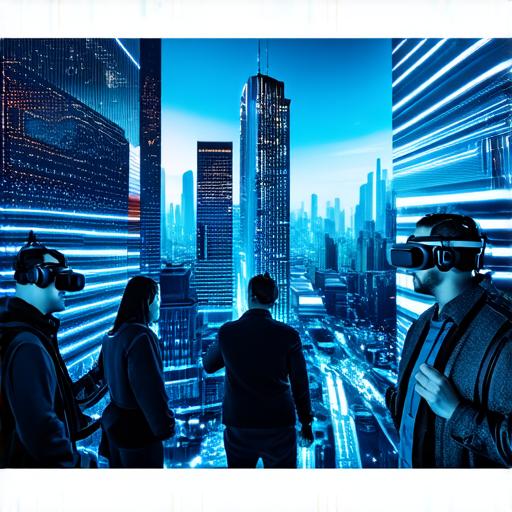
Why virtual reality is the future
Virtual reality (VR) has already started to change the way we interact with technology and each other. With VR, users can immerse themselves in simulated environments, creating a more engaging and realistic experience than traditional 2D media. The potential applications of VR are vast, from gaming and entertainment to training, education, and healthcare.
The Power of Immersive Experiences
One of the key advantages of VR is its ability to create immersive experiences that are difficult or impossible to achieve in real life. This makes VR an ideal medium for gaming, entertainment, and other activities where users want to escape from reality for a while.
For example, VR games like Beat Saber and Half-Life: Alyx offer players an entirely new level of interaction with the game world, allowing them to move their bodies and react in real time to the action on screen.
In addition to gaming, immersive experiences are also being used for training and education. For example, medical students can use VR simulations to practice surgeries and emergency procedures, while pilots can practice flying in simulated environments.
This not only allows for more realistic training but also saves time and resources by eliminating the need for physical equipment and facilities.
Virtual Reality in Healthcare
Virtual reality is already being used in healthcare to treat a variety of conditions, from PTSD to chronic pain. VR can be used to create simulations that trigger anxiety or pain responses in patients, allowing them to confront their fears or manage their pain in a controlled environment.
In addition, VR can be used to provide therapy for people with mobility or coordination issues, helping them regain their independence and improve their quality of life.
Virtual Reality in Education
Virtual reality is also being used in education to create more engaging and interactive learning experiences. For example, students can use VR simulations to explore historical events or scientific concepts in a more immersive way than traditional lectures or textbooks.
In addition, VR can be used to provide language learning opportunities by allowing students to practice speaking and listening skills in simulated environments.

Virtual Reality in the Workplace
Virtual reality is already being used in various industries for training and simulation purposes. For example, architects and engineers can use VR simulations to test designs and make changes in real time, saving time and resources.
In addition, VR can be used to create virtual tours of museums, historical sites, and other attractions, allowing people to experience them from anywhere in the world.
The Future of Virtual Reality
Virtual reality is still a relatively new technology, but it has already shown tremendous potential in various industries. As VR continues to evolve and improve, we can expect to see even more innovative uses for this technology.
For example, virtual reality could be used to create immersive advertising experiences or to simulate complex industrial processes for training purposes.
One of the biggest challenges facing virtual reality is the cost of equipment and software. However, as technology advances and becomes more affordable, we can expect to see more widespread adoption of VR in various industries.
In addition, as developers continue to create new and innovative experiences, we can expect to see virtual reality become an integral part of our daily lives.
Summary
Virtual reality is already transforming various industries, from gaming and entertainment to healthcare and education. As this technology continues to evolve and improve, we can expect to see even more innovative uses for VR in the future. Whether you are a developer or simply someone who is interested in technology, virtual reality is definitely worth exploring as it has enormous potential to change the way we interact with each other and with the world around us.


